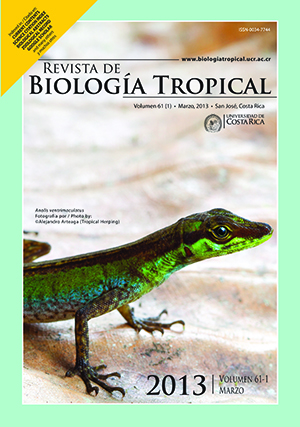Abstract
The fragments of Abies guatemalensis forests in Western Guatemala are the reservoirs of plant species that have been poorly documented, missing the opportunity to expand the knowledge of the local flora and its use in conservation planning. To assess this, a floristic study was done in areas between 2 950-3 360masl in Western Guatemala between 2010-2011. Ten locations were sampled: in each a 500m2 plot was surveyed, and plants were classified in four strata by plant height (0.05-30m). A total of 119 species, 92 genera and 50 families in four divisions were found. The families with more species were Asteraceae, Poaceae, Rosaceae, Lamiaceae, Apiaceae and Solanaceae, and the most abundant genera were Salvia, Alchemilla and Bidens. The number of species found by strata was: 33 (low herbaceous), 49 (high herbaceous), 30 (shrubs) and seven in the tree strata. Regarding geographical distribution, the biggest species group detected was from central Mexico to Central America with 67%, which compared to the forests of A. guatemalensis in central and Southern Mexico, showed high floristic affinity, especially at the family and genus level. However, even having families and genera in common in the general structure of the fir forests, their floristic particularities should be taken into account when making management and conservation plans, because these are influenced by soil, latitude and microclimate conditions.






